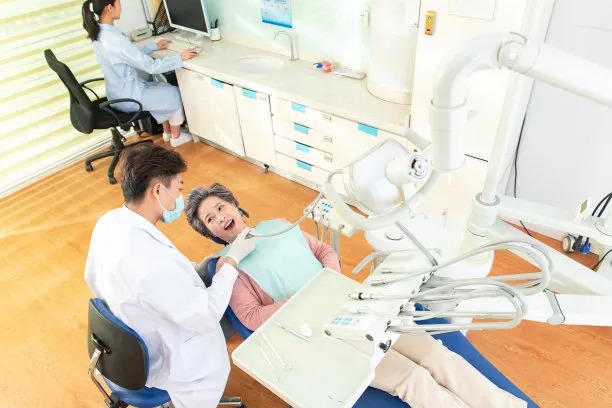The Essential Steps and Healing Process After Extracting a Tooth for Optimal Oral Health Recovery
Summary: Extracting a tooth can be a daunting procedure, yet understanding the essential steps and healing process involved in recovery can make a significant difference. This article outlines the crucial measures to follow post-extraction, emphasizing proper aftercare, managing discomfort, recognizing signs of complications, and maintaining oral hygiene. Following these guidelines can promote optimal healing and contribute to long-term oral health. By addressing both physical and emotional aspects, patients can navigate their recovery journey more effectively, ensuring a smooth transition back to health.
1. Essential Aftercare Steps for Recovery

After a tooth extraction, immediate aftercare is vital for a successful recovery. Patients should bite gently on a gauze pad placed over the extraction site for about 30 to 45 minutes. This helps to promote clotting and minimize bleeding. If bleeding persists, more gauze can be applied and pressure maintained. Avoid excessive movement of the mouth during this critical period to allow for proper healing.
Following the initial bleeding control, it is essential to rest and avoid vigorous activities for at least 24 hours. Resting allows the body to allocate resources to healing, which is especially crucial in the first few days post-extraction. This period is also a good time to start a soft food diet, gradually introducing solid foods as healing progresses.
Patients should also be mindful of their oral hygiene routines following an extraction. While it is crucial to avoid brushing directly on the extraction site for the first few days, patients can still maintain a clean mouth by gently rinsing with warm salt water after meals to help minimize the risk of infection and stimulate healing.
2. Managing Discomfort and Pain Relief
After tooth extraction, some discomfort and pain are normal. However, managing this pain effectively can greatly improve the recovery experience. Over-the-counter pain relievers, such as ibuprofen or acetaminophen, can be taken as recommended by a healthcare provider. Its important to follow the instructions carefully, especially regarding dosing and frequency.
In addition to medication, applying a cold compress to the outside of the cheek can reduce swelling and numb the area, providing further relief. Doing this in intervals of 15 minutes on and 15 minutes off during the first 24 hours can be very effective. However, after the first day, warm compresses may be used to promote blood flow and improve healing.
Listening to ones body is key during this phase. If pain or swelling worsens significantly, it may indicate an infection or other complications. In such cases, contacting a dentist for an evaluation is critical to ensure proper management of recovery.
3. Recognizing Signs of Complications
Despite taking proper care following an extraction, complications can arise. Patients should be aware of certain warning signs to ensure timely intervention. One such complication is dry socket, which occurs when the blood clot at the extraction site dislodges or dissolves, exposing bone and nerves. Symptoms of dry socket include increased pain, an unpleasant taste in the mouth, and visible bone in the extraction site.
Additionally, signs of infection can include persistent bleeding, swelling that extends beyond the first few days, fever, and an unusual discharge from the extraction site. These symptoms require prompt attention from a dental professional to avoid further complications.
Regular follow-up appointments with the dentist post-extraction can help monitor the healing process. These appointments provide an opportunity for patients to discuss any concerns and receive professional guidance, thus promoting a smoother recovery.
4. Maintaining Oral Hygiene After Extraction
Maintaining good oral hygiene following a tooth extraction is crucial for preventing complications. Even though direct brushing near the extraction site should be avoided initially, patients should continue to brush and clean the rest of their mouth regularly. This prevents the buildup of bacteria that could lead to infection.
Rinsing with warm salt water is a gentle way to keep the mouth clean without disturbing the extraction site. It is advisable to wait at least 24 hours post-extraction to begin this practice to avoid disrupting the clot. Patients can start with rinsing three to four times a day, especially after meals, to promote healing.
Ensuring that dental check-ups are consistently scheduled can help with ongoing oral health. Regular dentist visits help assess the healing process and address any issues promptly, preventing potential complications from arising in the future.
Summary:
In conclusion, following the essential steps after tooth extraction, such as proper aftercare, effective pain management, recognizing complications, and maintaining oral hygiene, can lead to an optimal recovery. Each patient’s journey may vary, but understanding these elements empowers individuals to take charge of their healing process, leading to improved overall oral health.
This article is compiled by Vickong Dental and the content is for reference only



